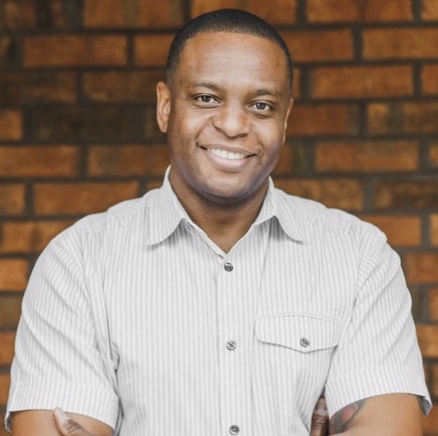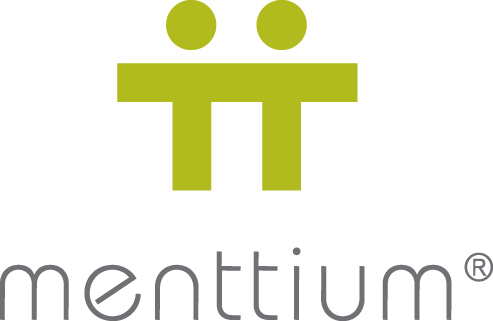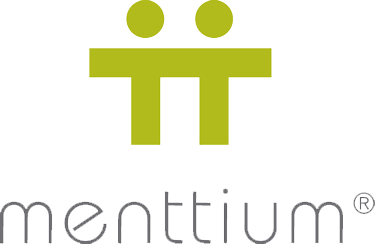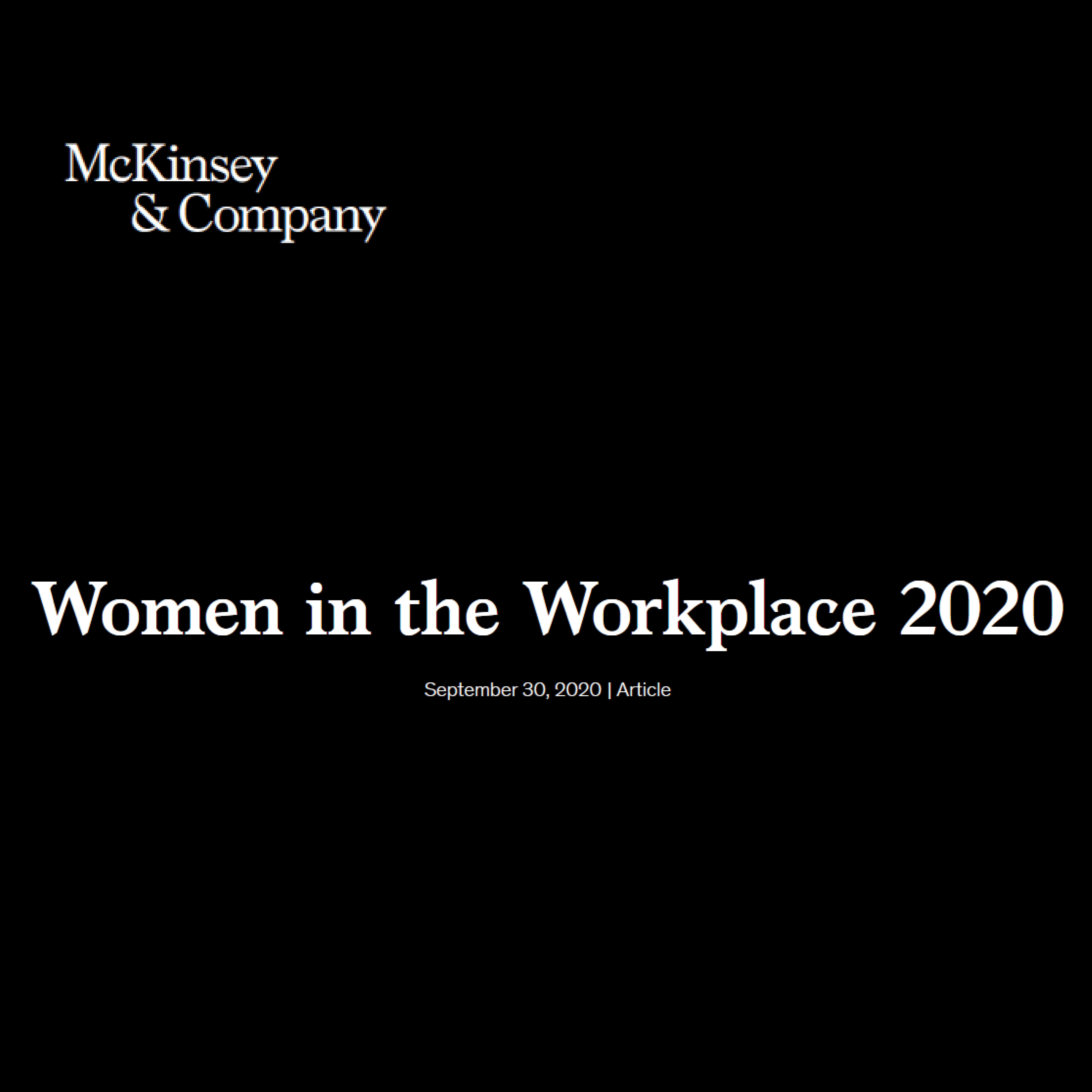

This episode features a conversation with Dr. Dellroy Birch on race, diversity, equity, and inclusion in Corporate America. Dell talks about why companies are addressing race and equity in a different way than they have in the past. He describes some of the barriers to advancement that professionals of color face in corporate America and outlines best practices for creating DE&I programs that are effective. Dell describes his leadership research and identifies traits that help leaders successfully navigate change. He also shares his habits for success, his advice to young professionals, and his favorite quote.
FULL TRANSCRIPT
Brown: Hi, everyone. Welcome to the Menttium Matters podcast, where we talk about leadership, life, and the transformative power of mentoring. This is Solveig Brown, and today our conversation is going to focus on race, diversity, equity, and inclusion (DEI) in corporate America. My guest is Dr. Dellroy Birch. Dr. Birch has a broad multi-industry background in all aspects of operations, strategy, transformation, operational excellence, business development, and business consulting.
He is currently the director of corporate enterprise strategy for JM Family Enterprises, and he is also the chairman of the board for a nonprofit that does global outreach. Dr. Birch has a PhD in organization and management and is an adjunct professor at DeVry University, where he teaches business technology, supply chain, and operations management courses.
He has been a mentor for Menttium since 2010, and he is the coauthor of Return on Mentoring: Developing Leaders and Advancing Diversity and Inclusion within the Organization. Welcome Dell, I am so glad to have you as a guest today.
Birch: Thank you for having me. It’s an honor to be here.
Brown: This past year has drawn attention to systemic racism and glaring inequities for people of color in all facets of American life. Corporations are under pressure to take a stand on racism and address the inequity within their organizations. You have a PhD in organizational management, can you talk more about why corporations are addressing race and equity in a different way than they have in the past?
Birch: There are a number of elements as to why it’s being addressed now so differently than it has in the past. I want to take some time and unpack each of those a bit more. One of the things that made DEI so prevalent across all spectrums was what occurred in 2020. Now, companies and corporations have actively been participating in diversity, equity, and inclusion programs, but because of the awareness through the George Floyd protests and during the pandemic, we had nothing else to watch. It became so much of a movement across the United States and globally in some parts of Europe that the focus on the inequities in certain aspects of minorities became an area of focus for corporations. With the advent of cancel culture driving how corporations respond to the things that matter most to their consumer base, they had no choice but to accelerate a focus on DEI. Now, the other thing is that as the generations of the workforce get younger and younger, it is more of a diverse representation, not just at the frontline level where you typically have more diversity typically, but throughout the organization. So, not only are organizations accelerating and magnifying the focus on DEI, they’re also being more judicious in how they look at the disparity of inequity and diversity and inclusion at all levels of the organization, including the top levels of an organization.
Brown: So, it’s the pressure from people saying this has to change. The financial pressure that if customers see that you’re not being part of this solution, they will take their business elsewhere. Would you say that’s fair too?
Birch: Yes, that’s fair, especially when you have a business that works in the direct-to-consumer space where you’re dealing directly with the consumer. Where it becomes a bit trickier is in the business environment where you’re not being exposed to the direct consumer. In those cases, depending on the relationships you have and the representation that you have at the account executive, client executive level may drive the focus for more diversity, equity, and inclusion between companies. There’s still a long way to go, but what I’ve seen is that corporations are actively doing it. The challenge becomes not only are they doing it, but how sustainable will it be beyond the issue being prevalent to the consumer base.
Brown: Right. The report Being Black in Corporate America speaks to exactly what you just said. It indicates that there is a lot of work to be done to close gaps in leadership, reduce racism, and create workforce environments where employees feel empowered. The statistics are that currently only 3.2% of executives and senior level managers are African American, and only 1% of Fortune 500 companies have an African American CEO. Sixty-five percent of African American employees feel that it is harder for them to advance. Can you talk about some of the barriers to advancement that African American employees and other professionals of color face?
Birch: Absolutely and it’s a big topic that is near and dear to my heart because I am Black and I have had to face most, if not all the challenges throughout my career. The unfortunate thing is that not everyone intends to make it difficult for me to be Black. It’s just that there are unaware issues and sometimes unconscious biases, even conscious biases that have presented that. Now as an African American leader and a professional, a lot of the things that I’ve had to face are really where I started. There’s a high population of African Americans who are not privileged or do not have the benefit of starting in a place where they were given the advantages of knowing how to navigate the professional environment. You’re learning on the job. You try certain things, it doesn’t work, you try again, and then you hit the glass ceiling where there is an ambiguous nature of what do I do to become successful. So, I start mirroring what I see, which may not necessarily position me in the best light. It’s like starting a race where you are ahead of me four laps in the relay, and we’re running at the same speed. It’s difficult for me to ever catch up to you, right? That’s contextually the nature of it. The other aspects are that because the power of the ability to make decisions, hire, fire, and promote, lies within the majority of the White American environment and with the lack of representation for African Americans, it’s very difficult to have representative leadership as an African American, bringing awareness to the fact that it doesn’t matter what school you come from. What really matters is are you able to do the job?
Naturally, I’ve seen across all the companies I’ve worked with, I’m not pointing out any specific company, but of all the companies I’ve worked with, and I’ve worked with many companies globally, there is a tendency to hire like me. A person who has the skill sets I have. A person who I’m comfortable with. A person who is malleable and coachable. A person who I can trust will have my best interest. That’s natural from a human nature standpoint. However, what that does is it limits the focus on the opportunity in the pipeline for minorities, especially in African Americans to be sourced from some of the second and third tier schools.
For example, I rarely see recruitment coming from HBCUs or local community colleges where a person didn’t have a good start in life and they had to get a job coming out of high school to support their family and eventually having to go back to school in their late 20s or 30s so they’re coming in as an adult and may not have the credentials up front. Now that’s from a sourcing standpoint from the introduction into the workforce. Within the workforce, there are very few mentoring programs that allow minorities, especially African Americans, to have awareness of all the opportunities that exist. I’ve yet to be at a company where a high potential list doesn’t exist. There’s always a high potential list and the challenge is leaders know there’s a list. Everyone else doesn’t know there’s a list. The criteria to get on the list is usually hidden, and the goalpost moves where the criteria shifts. It’s about how you portray yourself from a likeability standpoint, as opposed to how do I even get onto the list to be coached to be a potential future leader of the organization. Unless you build relationships with the people who know these things, it’s difficult for you to be able to know how to navigate.
As a minority in the corporate work environment, I’ve been fortunate where I’ve always had a person that is not Black put their arms around me and say, hey, you got what it takes, let me teach you something. So, I’ve been fortunate, and I’ve been fortunate in my career to be able to navigate the corporate environment, which is why I’m passionate about giving back. But the thing that I’ve noticed is from a minority status, unless you have those relationships or culturally if you’re not taught to just go out and build those relationships, because typically folks from other races are folks who’ve done bad things to you, so there’s a lack of trust, the conflict and the conundrum is just the cultural norms are bumping up against the corporate norms and they’re diametrically opposed, which causes this internal friction that it’s very difficult to articulate in words, but I know it exists. That creates this paradox for minorities where we’re trying to navigate among all the barriers to promotability and success in the workplace. It exists even more at the senior leader level.
Brown: Yes, that’s a lot. So, lack of transparency, lack of recruiting from the get-go and then once you’re in the workforce, some of the unconscious bias, how that plays out and sometimes direct racism. I’ve interviewed people that talk about the exhaustion of code switching of figuring out how to navigate, like what you’re talking about, that cultural shift within the organization and then not having senior leaders that look like you or not having people that will advocate for you. In line with what you’re saying, a recent McKinsey report notes that even if a company is achieving a diverse workforce, many have failed to cultivate work environments which effectively promote inclusive leadership and accountability among managers, equality and fairness of opportunity, and openness and freedom from bias and discrimination. With so many companies pledging to enhance DEI efforts right now, what do you think is the best approach to creating diversity, equity, and inclusion programs that are effective?
Birch: This is a dicey one and the reason I say it’s dicey is because depending on the recipient of the benefits of those programs, the outcome may be different. I’m not talking about the goal of the program, but the outcome. There’s a couple of different buckets and I’ll speak generically, not specifically. There’s a bucket of I’m looking for promotability. I’m looking for equity in voice, authority, and decision making. I want the ability to have the same amount of earning potential over time or whatever those categories are. So, depending on how the recipients from a diversity standpoint look at the programs, the outcome may be different. However, what’s the norm and what’s consistent and nonnegotiable at any level is the ability for any organization to have representative based leadership driving and influencing these programs. What I mean by that is that in many cases, because there’s a lack of diversity at the top, it is non-diverse leaders making decisions for the DEI programs. How would a non-diverse leader know what it means to be Black, what it means to be Asian? They’ve never walked a mile in those shoes. So, everything they’re doing is an assumptive based decision, which is dangerous because that’s the inherent nature of why there’s a lack of DEI from an equity, inclusion, and diversity standpoint in the workforce, because they are naturally unconscious biases.
Now, minorities also have unconscious biases, however having representative based leadership, one of the things I’ve challenged in almost every company I’ve been to with my leadership is, unless I see someone that looks like me in senior leadership, then any decision being made is going to be missing some core elements of what matters to me and people that look like me. Or a challenge I would ask the leadership is when you look around the room in your weekly leadership meetings, how many people look like me in the room? Because if there’s zero, then every decision you’re making is not representing what matters most to me, or is even representative of cultural equity, a diverse perspective from me. One of the things that I’ve noticed is that as corporations establish the DEI programs, the conundrum that sets in is that if they put in a lead role of the program, the natural tendency is to put a person of a diverse background in that role. That also limits the person in that role to move anywhere else because they are now driving a sensitive topic that most people are uncomfortable talking about.
However, I do believe there’s a couple of evolutions where having true representative based leadership drive these programs or sponsor certain elements of the program will help everything from sourcing new talent, refreshing new talent, whether it’s seasoned professionals coming in the new hire process and also developing in house talent through a succession pipeline where we have, we being the population of any company, have leaders represented at almost every facet within the organization. I’m not just talking Black, I’m talking Asian, all elements of Asian, Indian, and East Asian. You have females, LBGTQ, all aspects of diversity represented within an organization, but it starts with representative leadership rather than that assumptive based leadership decision.
Brown: I’ve read lots of places too that the business case for having diverse senior leadership is strong, that companies should aspire to that because it’s good business sense as well.
Birch: Absolutely, whether it’s business-to-business, business-to-consumer, direct-to-consumer, the population of consumers or the sample set of consumers that will be consuming the product or service, more than likely will be representative of diverse background or depending on where the company is located, the social environment that the physical location is maybe in a diverse environment. It makes sense to not only source from that area, but also grow the talent within that area to give back that economic stimulus to keep the money being spent in that local area.
Brown: Those are great points. You talked about mentoring before, and you participated in Menttium’s Momentum program in 2008 and then you started being a mentor in 2010 and have mentored so many people since then. Can you talk a little bit about the impact that participating in the Menttium program had on you and then also talk about the experience of being able to give back as a mentor?
Birch: Yes, it’s a great question. This may sound like a public service announcement for Menttium, but I truly mean it, I believe Menttium through and through. When I participated as a mentee in the Momentum program with Menttium back in 2008, one of things that was very refreshing for me was as a young professional that was considered a high potential at the time in my corporation that I was at, the one thing that I was unable to put my thumb on was almost everything I just described. The ability to know there’s something else I need to be doing. There are some things I’m bumping up against, but I can’t describe it and I feel like I’m an island because every time I look around the room, I’m the only Black person there. I’m the youngest person in the room. I’m competent. I am relevant, but because of my background and my age at the time, I may not have been credible.
One of the things that Menttium allowed me to do was one, be part of a community that I felt like I belonged to because it was an in-person program where when I got around other professionals in the program, one, they looked like me. They spoke like me, same experiences, same backgrounds. I was able to exhale when we communicated with each other in the program, even if I wasn’t clear in articulating what I was looking for, they felt the same way. It was just a sense of community. The other thing that was impactful was the mentors at the time that were supporting the program. The mentor I had had the ability to be bold, brave and have the courageous conversation because he was a white guy in leadership and he was comfortable and courageous enough to even challenge some of the things I was asking and allowed me to articulate them in a way where I was able to spot some of the hidden gems and how to navigate my career, in addition to some of the blind spots. Some I didn’t realize I had, but the ones I knew I had, I didn’t realize how impactful they were in a disadvantaged manner because when I got into a situation where I didn’t feel like I was being treated fairly, those blind spots magnified in a way that projected a different Dell. So, from a mentee standpoint, being part of the community and having Menttium package a program in a manner where the program itself put into action and into content what I was not able to articulate and what I was seeking.
From a mentor standpoint, in the last 11 years since I’ve been mentoring, one of the things that really stands out to me is bidirectional learning. Every time I get with a mentee, I go in with an open heart just to be able to learn about that person. In addition to being able to understand what got them to where they are and having walked a mile in those shoes being in the program, I could see it in the first conversation with the mentee, this search. What they’re searching for, they may know exactly what they’re searching for. But most of the time it is beyond what their words can articulate. What I mean by that is that many times as professionals, we look around the organization that we’re in and we look at what “success” is based on who has success. So naturally the way our brains work, we short circuit the process to come to the conclusion. If that person is successful in that role, I need to mirror myself after that person, that set of behaviors. Now that may be relevant today or yesterday, but it may not be relevant tomorrow. Being able to work with the mentee to articulate what are their outcomes based on the personal vision mission goals that they have is one of the most important things.
I’ve shared this before, every time I connect with a mentee, that person has had a life before they cross paths with me. Being able to understand what that person went through allows me to cater how I engage with them to either extract what they’re looking for, maximize the momentum of where they’re trying to go, and build that collaborative, cohesive relationship where I get a chance to learn about them. It’s the fastest way for me to learn about their industry without having to spend the 20 years they have. So, it benefits me at the same time.
Brown: Definitely a win-win situation. I want to talk about your dissertation a little bit because I thought your topic was so interesting. You asked this question, “is there a positive relationship between one or more leadership traits and the ability of middle managers to successfully manage their workforce in times of change?” So, what did you find? Are there leadership traits that help leaders successfully manage change?
Birch: Pursuing my PhD was a personal goal and when I started my dissertation, my goal was to prove myself wrong. What I mean by that is I had this innate sense that there’s a specific approach to engage with people to get them to collaborate and really concentrate on a shared vision mission to maximize the outcome of an organization. I’ll tell you what that is in just a second, but I went in there to prove myself wrong and the outcome might have been cessation. I failed at proving myself wrong because the very thing I thought was the outcome turned out to be the outcome. When I looked at all the different types of leadership approaches to managing people, employees, and associates in times of uncertainty and change, one of the things that I looked at was what are all the different known leadership approaches. Then I narrowed it down to what would be the most relevant ones in times of uncertainty and change. At the time, I was working in the aviation industry. Also, the financial industry was not doing so well, and a lot of the transportation and health and regulatory aspects of those industries were hidden. So, there was a lot of uncertainty and change in the U.S. and across the world.
I boiled it down to four leadership traits. One was the trait theory of leadership, where you look at what are the traits within leaders today that the company needs to replicate. Two was leader member exchange theory, which was based on how the leader and employees engage with each other. Then you typically create in and out groups, and we all experience this in the workforce. There are groups that we know are the “in” group. If you belong to that group or that family, you typically have a nice path to success. If you’re on the outside, everybody’s trying to fight to get on the inside so that they can be part of that success track. Then there was transformational leadership. The reason I focused on transformational leadership was because at the time, Daniel Goleman’s book on transformational leadership and the growth of EQ and EI was really spawning, so at the time everyone was talking about all these soft skills needed by leadership, emotional intelligence, all that stuff. Then situational leadership, which was Ken Blanchard’s old theory on situational leadership and the different four quadrants of that.
One of the things I did was speak to and interview a lot of frontline and middle managers in the aviation space because at the time it was a lot of pressure, it was right after 9/11 and all the stuff that came with that. One of the things that I learned was that the most impactful leadership was not that transformational leadership because transformational leadership gets you to a point in time from transferable skills or a transformation in the organization. The most impactful was situational leadership and the reason I distinguish the two is because transformational leadership or emotional intelligence is one of about seven to nine multiple intelligences that were coined by Howard Gardner back in the 1970s. Unless we really maximize everyone’s multiple intelligences, because we all have them, some we have better than others, the only way to do that is through situational leadership, where we meet and lead people where they are. We cannot expect to hold them to where I am as a leader because I may have had more experiences than them. I may have had more exposure in breadth and depth than they have, I have to meet them where they are. Some of the things that became evident were not just leading people where they are but leading them and not just pushing them but pulling them up to a point where they get exposed and it’s up to them to choose whether they want to continue that learning. Some of the things around effective listening that mobilize action, so there’s a difference between effective listening versus active listening versus just listening. Effective listening is one of the most needed competencies in corporations, but it’s the least developed and trained competency in an organization. That’s a bit of a summary about the dissertation.
Brown: That is so interesting. I like hearing about the different leadership styles and effective listening. So effective listening means that you’re really listening and can understand what people are saying and then is active listening where you mirror back what they said?
Birch: Yes, so effective listening is the world according to the gospel of Dell. It’s me mobilizing active listening. In other words, active listening is engaging with the other person that you’re talking to, to make sure that you’re validating what you’re hearing, and you come to a common level of understanding. Effective listening is taking that active listening and helping to mobilize it, or at least help whoever is communicating with you understand what options they have to go execute and what they want as it pertains to either leadership, a leader, employee, associate engagement, or mentor mentee engagement. So, it’s effectively listening for the things that are being implied, but not said.
Brown: It sounds like you use that strategy when you are a mentor for someone, you use that situational leadership of meeting where they’re at, you use the effective listening to hear where they are, and then figure out the action. Could you give me an example of how situational leadership and effective listening would be used today in relation to corporate DEI initiatives?
Birch: Absolutely. I know that having been part of the DEI initiatives in multiple companies, one of the things that happens is there’s the typical active metric where you say, we need to have more diversity at all levels of the organization. So, let’s pulse the employee base to understand how they feel about diversity, equity, and inclusion. Depending on the feedback that occurs, the natural tendency may be to focus on diversity, equity, inclusion, and pay inequity, and role or position equity. But true effective listening may be that diverse professionals may not only want that, that might just be nonnegotiable. The true ask is I want to have a seat at the right table and be in the right seat at the right table at the right time where my voice is heard. That may be one of the key outcomes because no matter how many times, and I’m speaking for myself as a diverse professional growing up in organizations, I’m asked to execute the work and give my opinion when it comes time to execute. When it comes time to make a decision for the future of the company, I don’t have a seat at the table. Someone else is taking my inputs, making the decision, and getting the benefits from it. Now, I have yet to meet a diverse professional that has not experienced that or cannot relate to that. If there’s one out there, please, I’m willing to learn, but I haven’t met one yet.
Brown: That is just like a gaping hole of not having that seat at the table to do that. We have time for three final questions. Do you have habits that you feel have contributed to your success?
Birch: Absolutely. Two big habits that I stand on and I still do today, most people may not want to do this, but the one that’s a discipline is whichever company I’m in, I constantly gauge the CEO’s pulse, meaning what’s important to that CEO, because what’s important to that CEO is important to me. Not necessarily what’s right with my leadership chain above me, because that’s nonnegotiable. I have to do what they want me to do. However, I have to keep a pulse on what’s important to the CEO and that may be articulated in a 10-K or an 8-K filing. It may be articulated in the all-employee meetings. It may be articulated in an interview that you hear the CEO speak to some industry source, but I’m constantly keeping a pulse of what’s important to that CEO because what’s important to that CEO has to be important to me. The reason I make that a priority is because it allows me to control the narrative of what I’m hearing. Far too often, if I rely on my leadership chain right above me, I’m getting their perception, deduction, or their interpretation of what they think the CEO is about. Not to speak philosophically, but when people start comments with, I think, I feel, I believe versus what I know, it’s a huge gap. So, I keep a pulse on what I know is important to the CEO rather than what I think, feel, or believe I’m hearing through my direct leadership chain. That’s nothing against my leadership chain, it’s just that it’s a discipline that I hold for myself.
The second one is every weekday morning between 5 and 8 a.m. EST I watch Squawk Box on CNBC so I can get a pulse on all things in the market. Most people may find that boring. I’ve been watching it now for 22 years since my oldest daughter was born and the ability to stay relevant on all things business has allowed me to be credible and relevant in every conversation I have, because a lot of the things that are important to my CEO are actually discussed on that program.
Brown: Wow, those are great habits. It’s that continual learning of always keeping abreast of what’s important and what’s going on. What would your advice be to up and coming leaders?
Birch: My advice would be do the things I just mentioned, that’s the easy answer. But the larger answer is, especially for the up and coming leaders from any diverse background, regardless of what parameters you grew up with culturally, I’m not saying to put that to the side, keep that because that’s part of who you are and your authentic self, but it’s an opportunity for you to step outside of those norms that you grew up with and start actively building relationships with people around the organization. Far too often, we look at folks that have positional authority and think that’s who could make a change in our careers, in our opportunities. But a lot of times there’s a lot of people that don’t have positional authority but have influential authority. That is a louder voice and more influential on a change. Most of the opportunities I’ve gotten are because I built a relationship with someone in the workplace that is my peer or right beneath me that has a strong relationship, some family ties or connectivity outside with the CEO or the senior leaders. All it took was them saying, I really like working with Dell. He made me feel special and his work is top notch. Within a couple of weeks, I have a meeting with a senior leader saying, I heard about what you did for this person, and I would like to learn more about your background. That to me, it forced me as I was learning to be able to step outside what I knew was I don’t trust that person, I don’t trust this group, to step outside of that and start actively building relationships. Now, if you’re an introvert, that takes a calculated, measured, and judicial approach. If you’re an extrovert, it should be natural. If you’re like me on that borderline, you do it and then you suck your thumb in the corner afterwards. You do it again, right? But the biggest advice is actively start building relationships within and outside your organization and the more you make those intentional and authentic, people want to pour into you and they want to help you rather than the superficial, hit me up on LinkedIn, let’s chat, and then they don’t hear from you in another four months.
Brown: That is great advice. Final question, do you have a favorite saying, quote, or motto?
Birch: Yes, I’ll say it and then I’ll unpack it because it may sound a bit philosophical. One of my favorite sayings is, “without contrast, there’s no perspective.” How would you appreciate having money if you hadn’t been poor? How would you appreciate the value of food unless you haven’t eaten? The reason I say that a lot is because it allows me to look at how I interact with people so what comes out of their mouth at the time I interact with them may be a limited perspective because they haven’t had contrast. What I mean by that is if all you’ve seen and experienced is what you’ve seen and experienced, then how would you know anything different if that’s all you’ve seen and experienced? Unless you have the contrast of a different perspective or experience, whether seen or actively lived, there is a lack of true perspective. It allows me to engage with people from a more compassionate standpoint. Even if some of the things that come out of their mouth may appear a bit ignorant, it’s like, why are they saying that? Did they have the contrast? They may not have ever been told because no one has been bold enough to tell them, you know what you’re saying, you might not want to say that in the future and here’s why. In the corporate environment, when things are not favorable, most people just pivot away from it and do not address it, so that’s one of my favorite sayings.
Brown: I love that. I’m going to remember that Dell. Thank you for being my guest today. I really appreciate your depth of knowledge on race, diversity, equity, inclusion, leadership styles, and mentoring. Thank you for your perspective. You have given me much to think about, and I know that you’ve given our listeners a lot to think about as well.
Thank you all for listening to this Menttium Matters podcast. We have many great guests lined up, so be sure to subscribe so you don’t miss an episode. For additional resources, you can find show notes on the Menttium website. I look forward to having you all back next time.




